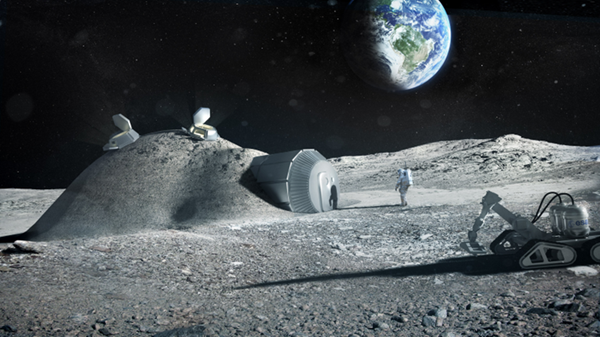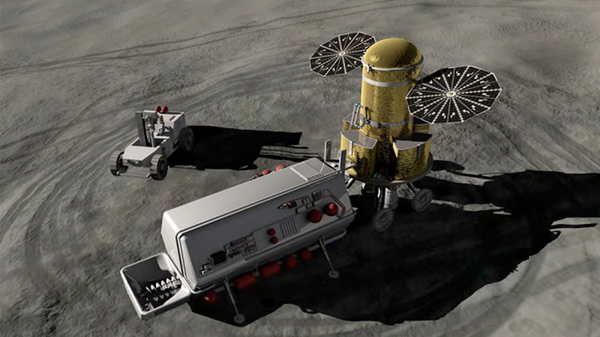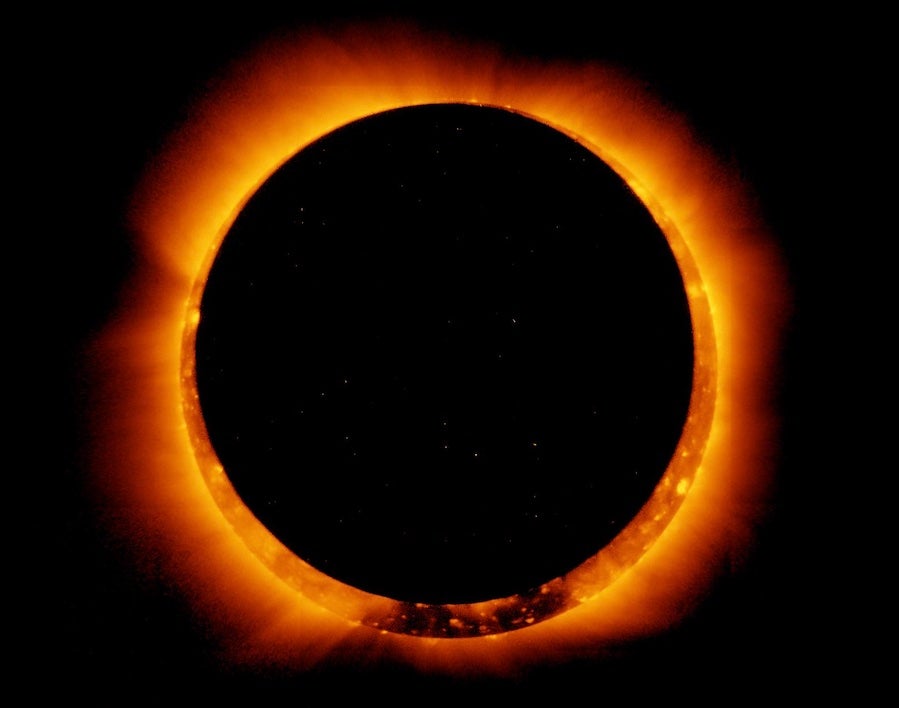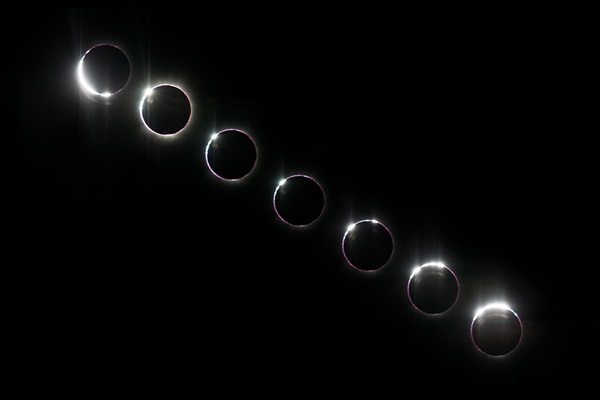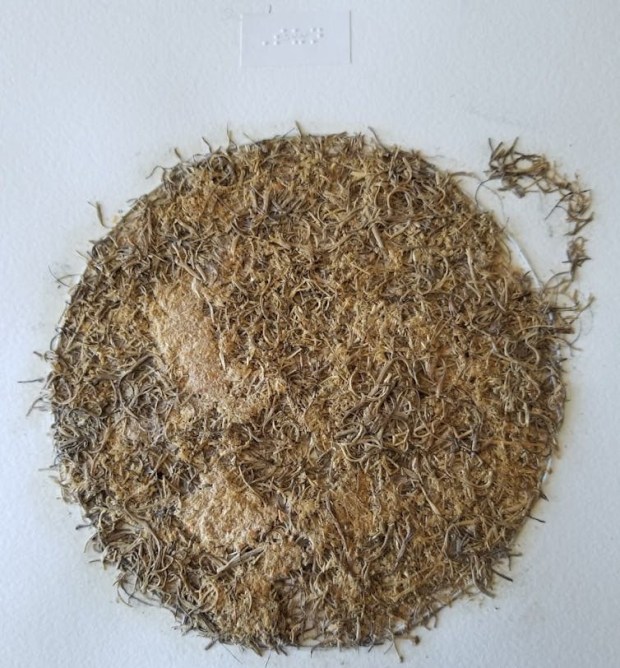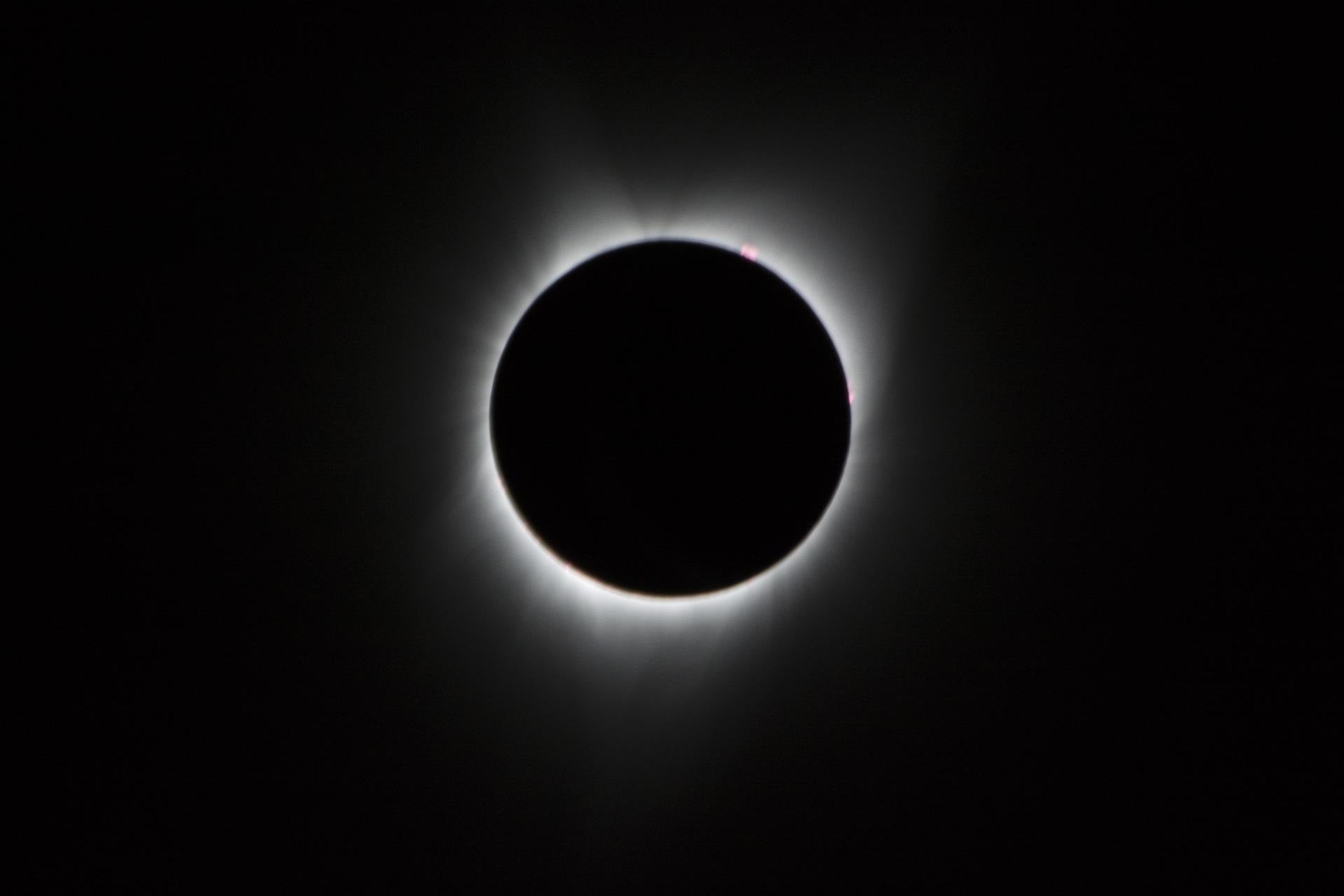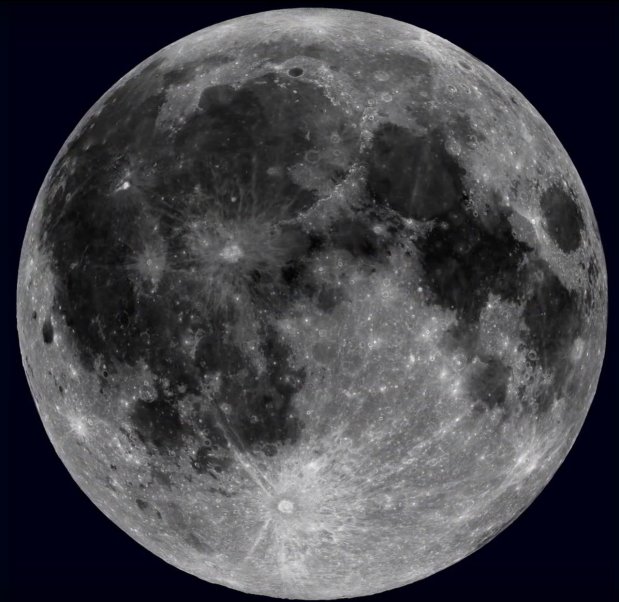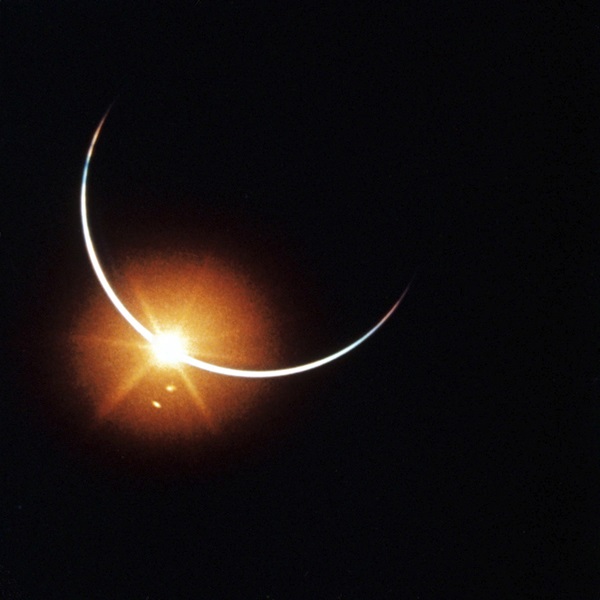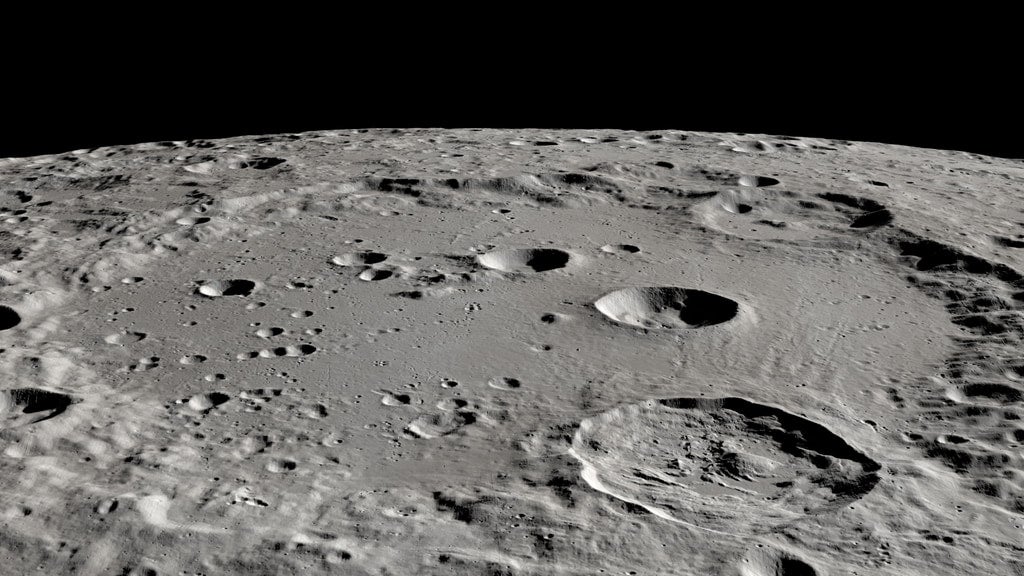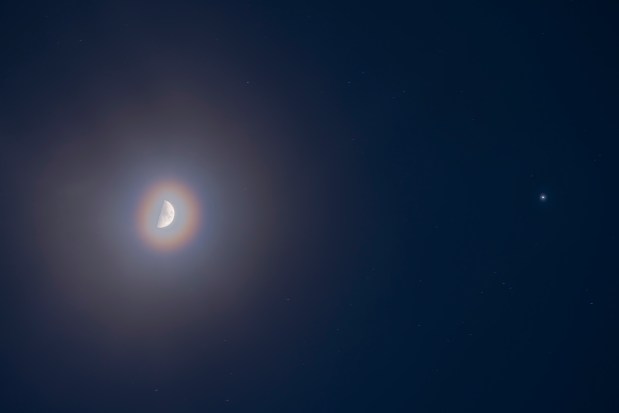A vast amount of detail
During my sweeps at 122x, I encountered a chaotic mix of intricate detail. This “citadel” of geologic wonder resides in eastern Mare Frigoris (the Cold Sea). It lies northwest of Hercules Crater and just east and slightly north of Baily Crater.
What first caught my attention was a comet tail of darkness extending northwest from two dark pits. I also saw several smaller ones, interspersed with regular rows of bright “pimples.” These details required me to boost my scope’s magnification to 304x.
High power transformed the rise into two parallel folds, aligned roughly north-south, with a prominent crater off the north end. The dark material extends from two pits on the rise’s western side: one northwest of the rise, the other on its southwestern edge. Most of the dark area is near the northwestern pit, which resolves into two conjoined vents (pinched like a figure 8).
The pits and pimples lie in parallel east-west rows segmented like vertebrae. A broad gown of bright material sweeps off the rise to the east, where it slips into a lagoon of dark mare material that is contained on the eastern edge by a bright ridge. Overall the scene is a visual playground of bright and dark symmetries.
These details associate with tissue-thin fissures. Most impressive is a long crack that extends eastward from the southeastern end of the rise. The crack widens slightly across the lagoon before tapering into a whisper of darkness at the western edge of the bright ridge.
I could not see evidence of the fissure on the rise, but another mirrors it to the west, slicing through the southern pit and another smaller pit, before ending at the northern edge of a small impact crater a short distance away. Under crisp seeing, the double northern pit — the one with the comet tail of dark material streaming off to the northwest — also displays a short fissure reminiscent of a tadpole’s tail.
The two pits from which the dark material extends appear to be volcanic vent complexes aligned along domed fissures. The dark material must be the result of pyroclastic volcanic events.
In the October 2015 Journal of Geophysical Research: Planets, Georgiana Kramer of the Lunar and Planetary Institute and colleagues detail their investigation of Mare Frigoris, which, they say, “has received little focused attention.” Using data from Clementine, Lunar Prospector, and Lunar Reconnaissance Orbiter, the researchers mapped and characterized the compositions of the mare’s eruptive history. Their data show that the citadel lies in a region directly over a major conduit for a magma plumbing system that fed many of the basalts that filled Oceanus Procellarum.
The region around the citadel hosts other geologic features, including volcanic vents and wrinkle ridges. The citadel is in the region’s largest pyroclastic deposit laid down by fire-fountain episodes. The fissures associated with the pits are part of dome/vent complexes that can fire the imagination with images of a once geologically active Moon.
As always, send your thoughts and reports to sjomeara31@gmail.com.

